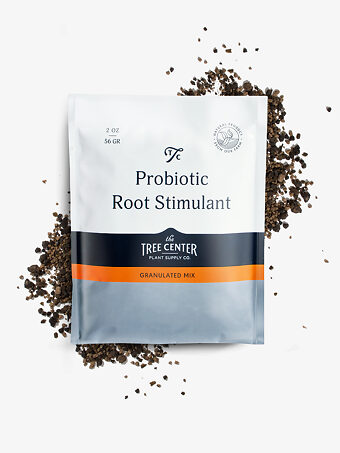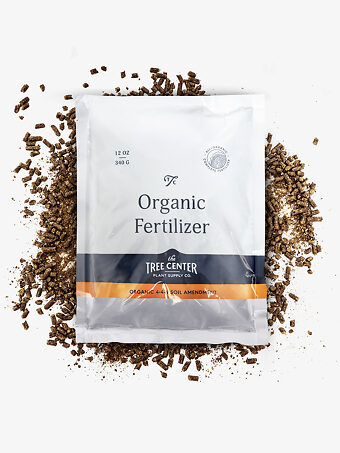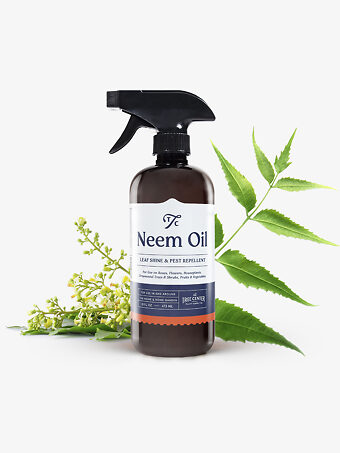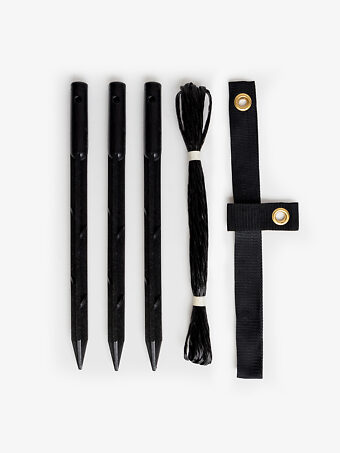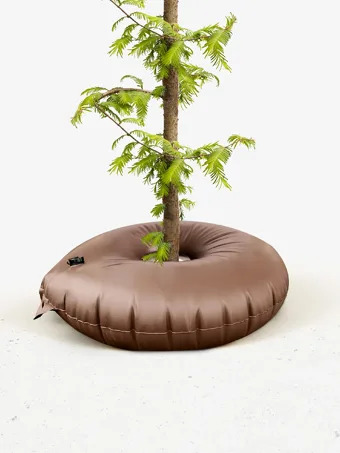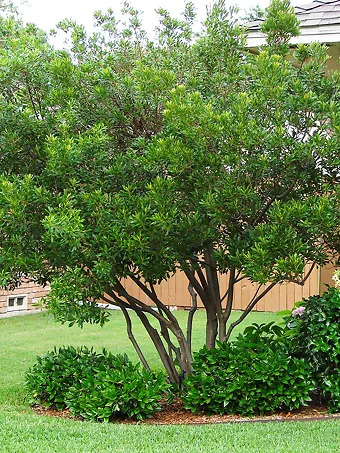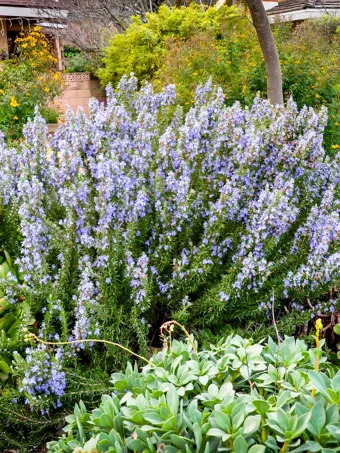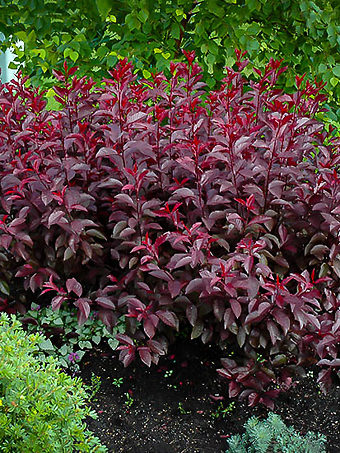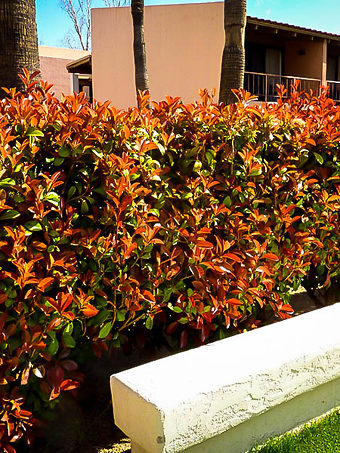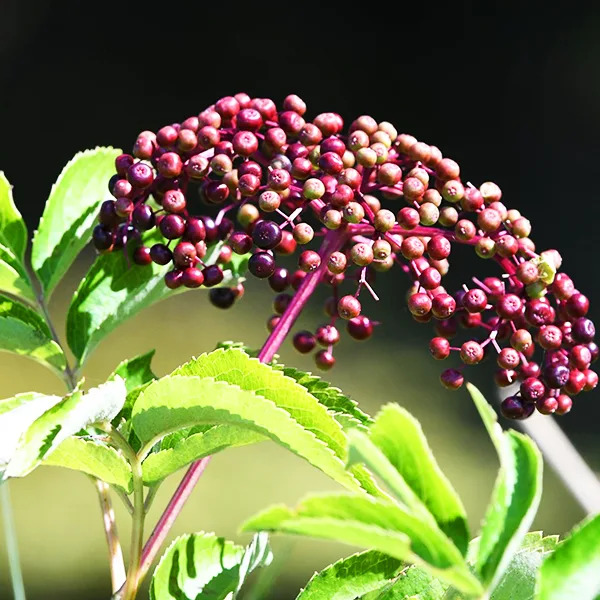
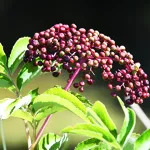
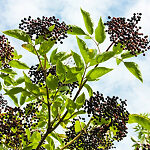
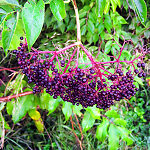
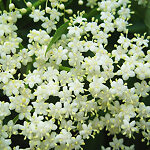

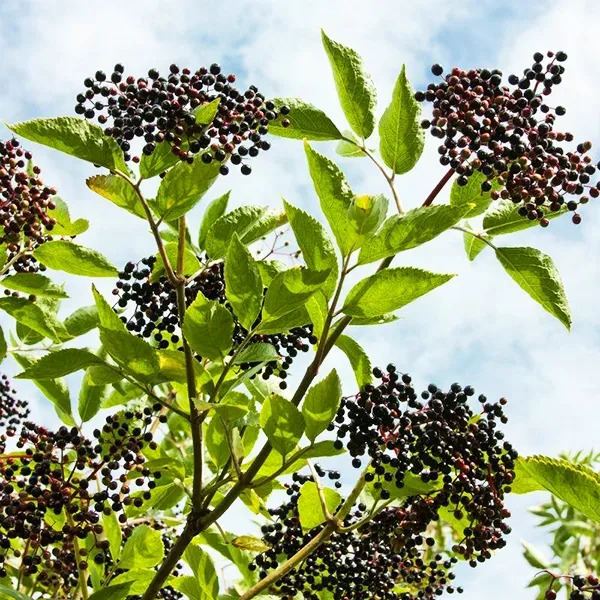
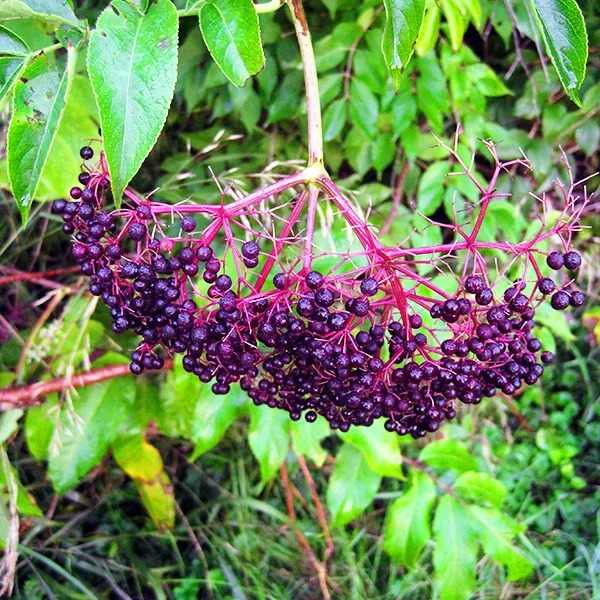
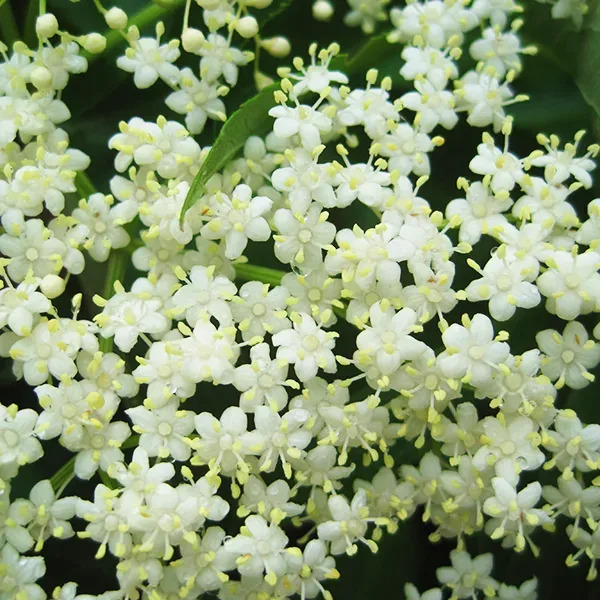
American Black Elderberry
Sambucus canadensisView more from Other Shrubs & Hedges
American Black Elderberry
Sambucus canadensis
this item doesn’t ship to
The American Black Elderberry is a medium-sized deciduous shrub native to much of North America. It has attractive divided leaves of light green, which turn yellow in fall. It grows to about 10 feet tall and wide, but can be kept smaller with pruning. Clusters of white flowers, up to a foot across, grow in early summer. These are fragrant and attract butterflies and pollinators. By late summer or early fall these become heads of purple-black juicy berries. Both flowers and berries can be made into alcoholic drinks, and the berries make delicious jellies and baked goods. Easily grown, even in wet areas, and ideal for cottage gardens, wild gardens and self-sufficient gardening. It is self-pollinating and doesn’t need a second bush to produce a full crop.
- Rounded native shrub with attractive foliage
- Big heads of tiny white flowers in early summer
- Clusters of purple-black berries in early fall
- Flowers and berries can be made into beverages
- Berries make delicious jelly and pies
Plant the American Black Elderberry in full sun for the best blooms and berries, in any soil, from ordinary garden soil to wet conditions and beside water. It will grow in acid soil and slightly alkaline soil. Generally free of pests or diseases and not seriously troubled by deer. Prune in early spring to encourage new shoots, remove old branches and keep a neater profile. All parts except for the flowers and ripe berry flesh are mildly toxic.

Botanical Name:
Sambucus canadensis
Mature Width:
6-10 ft
Mature Height:
9-12 ft
Grows Well In:
Zones 3-9
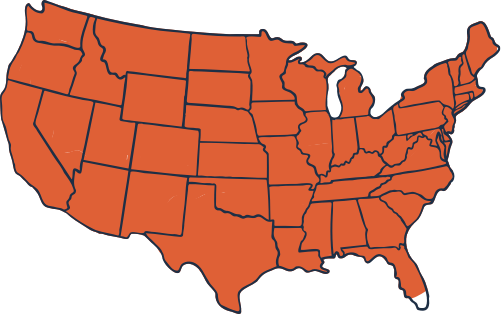
Sun Needs:
Full Sun, Partial Sun
Water Needs:
Moderate
Growth Rate:
Fast
Flower Color:
White
Flowering Season:
Summer
